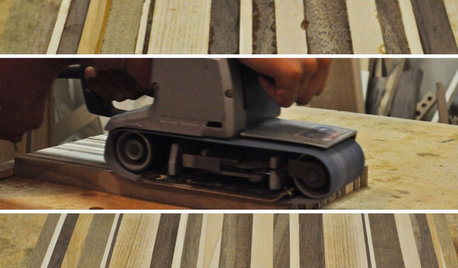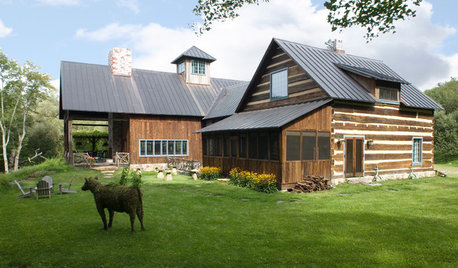Noooo save me from myself
User
7 years ago
last modified: 7 years ago
Featured Answer
Sort by:Oldest
Comments (49)
gardengal48 (PNW Z8/9)
7 years agoUser
7 years agolast modified: 7 years agoRelated Discussions
Mandarine recovering - save me from myself!
Comments (9)What kind of soil do you have? Straight clay, gritty clay, sandy loam or what? That will make a big difference in how often you need to water. Is your tree in full sun, or less. If less than full sun, how many hours of full sun does it get over the course of the day? And even though I sell those water meters at work, they are not the highest of quality and get out of calibration very easily, no way to re-calibrate them either. So it could just not be reading correctly. I like using a thin wooden dowel instead. I can poke it down further than my finger, and it shows very well if the soil is wet, damp, or dry. Your tree seems to be suffering from lack of air in the root area, either from too much water, or soil compaction or both. Did those leaves that dropped before seem soft and yellow? And did they drop off easily, like if you just lightly touched them they fell off? If so, that's a classic symptom of the soil staying too wet, which drives out the air, and invites root rot. How do you apply your water; automatic irrigation with spray heads, bubbler heads, drip irrigation, or hand watering? That will also make a difference on what fertilizer to use. EB Stone Citrus is a great food for in-the-ground citrus, but it's a powder/granular that's dissolved slowly over time by irrigation. So you need to place it where it gets wet when the tree is watered. If you fertilize according to the EB Stone label, you may not need to add extra food. But if you wish to, do dilute it at least 50% I don't think citrus need a bloom type fertilizer, they always need the nitrogen, the ratio recommended for citrus is 5-1-3 NPK. Most of California's soil is pretty decent with phosphorus and potassium. Even most micro nutrients are in fairly good supply naturally, it's just that if the pH gets too high, they can be locked up in a form the tree cannot absorb. So keeping the pH at a neutral or slightly acid (slightly!) state helps the tree absorb the nutrients in the soil, even those you add by fertilizing. That why most good fertilizers out here add Sulfur. Sulfur is a great soil acidifier, and it lasts quite a while too....See MoreNoooo! Frost!
Comments (46)Brenda I don't cover things. There would just be to much. The plants usually survive these mid summer frosts...and if they don't ohhhhh well. I have a few micro climates in my yard, and I think the new fence this year has helped that even more. The tender veggies are in the greenhouse....the doors have been mostly closed to keep it warm in there. The veggies in the outside garden are pretty tough...with the exception of the beans.....they don't look to happy....but we'll see in a few days I guess. I wonder how Ian's garden and Jean's garden faired. Sierra...See MoreSomebody save me from myself!
Comments (5)gayle - DD has a friend sleeping over and she just tasted a dumpling. She swallowed it, but the look on her face is priceless LOL. She said very politely "I don't think I will have another". Then later she quietly says to DD "your mom eats weird food". Caroline - the recipe for both the steamed dumplings and the rice in lotus leaves is the same. Buy frozen, do not defrost, steam for 15 minutes, then eat :). The potstickers? Buy frozen, do not defrost, heat some oil in a pan and add potstickers. Let brown a bit. Add water up to 1/4 of the way up the sides of the dumplings (dance around the oil spatters, it is part of the technique), then cover. Allow to steam until a lot of water has boiled away. Remove the lid, let the rest of the water evaporate. Let the dumplings continue to cook until the bottoms are nice and brown. I have made my own fillings which largely consist of cabbage, a bit of pork or chicken, soy sauce, oyster sauce, green onion, chili flakes, and sesame oil. This time I got lazy, and I have to tell you, they were the best I have had in a while. I cannot, however, cook sticky rice to save my life. jannie - that sounds so good! Tempura is about the only thing I will eat japanese. Don't like vinegar rice, don't like seaweed, don't like miso, and don't like bonito broth. And not a fan of raw or even cooked seafood. Plus, any raw egg served to me will not be well received, quail or not! aptosca - I have to admit, when I go out for dim sum (rarely) I enjoy the fried items as well as the steamed ones. Shrimp balls coated in rice noodles then fried? Yum!...See MorePlease save me from Honey Oak. Review my new kitchen layout
Comments (38)I was told the overhang is 12". I'd like 15' but then we start getting into the living room. We are going to instal laminate flooring throughout the entire top floor to make things flow nicely. I'm ok with laminate in the kitchen although I know people have opinions about that choice :). I love the sliding table idea but that also impinges on the walking area between the island and living room....See Morefloral_uk z.8/9 SW UK
7 years agolast modified: 7 years agosocalgal_gw Zone USDA 10b Sunset 24
7 years agoEmbothrium
7 years agoUser
7 years agokatob Z6ish, NE Pa
7 years agoUser
7 years agoUser
7 years agowantonamara Z8 CenTex
7 years agoposierosie_zone7a
7 years agoLaLennoxa 6a/b Hamilton ON
7 years agoUser
7 years agosunnyborders
7 years agolast modified: 7 years agoLaLennoxa 6a/b Hamilton ON
7 years agokatob Z6ish, NE Pa
7 years agokatob Z6ish, NE Pa
7 years agosunnyborders
7 years agolast modified: 7 years agoposierosie_zone7a
7 years agosunnyborders
7 years agodavidrt28 (zone 7)
7 years agolast modified: 7 years agoLaLennoxa 6a/b Hamilton ON
7 years agodavidrt28 (zone 7)
7 years agoLaLennoxa 6a/b Hamilton ON
7 years agoUser
7 years agoecholane
7 years agolast modified: 7 years agoUser
7 years agodbarron
7 years agokatob Z6ish, NE Pa
7 years agogardengal48 (PNW Z8/9)
7 years agoecholane
7 years agomnwsgal
7 years agodavidrt28 (zone 7)
7 years agolast modified: 7 years agodbarron
7 years agoecholane
7 years agoUser
7 years agodavidrt28 (zone 7)
7 years agolast modified: 7 years agodbarron
7 years agolast modified: 7 years agodavidrt28 (zone 7)
7 years agoLaLennoxa 6a/b Hamilton ON
7 years agogardengal48 (PNW Z8/9)
7 years agoLaLennoxa 6a/b Hamilton ON
7 years agowantonamara Z8 CenTex
7 years agodavidrt28 (zone 7)
7 years agolast modified: 7 years agoLaLennoxa 6a/b Hamilton ON
7 years agolast modified: 7 years agogardengal48 (PNW Z8/9)
7 years agoAbby Marshall
7 years ago
Related Stories

FRANK LLOYD WRIGHTStep Inside a Frank Lloyd Wright House Saved From Demolition
The historic Phoenix property is now part of the architect’s school at Taliesin, where it will be used as a design lab
Full Story
ARCHITECTUREEnergy-Saving Ideas From 3 Affordable Green-Built Houses
Get lessons in budget-friendly green building from design competition winners in New York state
Full Story
COFFEE WITH AN ARCHITECTWhat My Kids Have Taught Me About Working From Home
Candy and Legos aren't the only things certain small people have brought to my architecture business
Full Story
LIFEYou Said It: ‘It Was a Symbolic Gesture to Myself’ and More Quotables
Design advice, inspiration and observations that struck a chord this week
Full Story
DIY PROJECTSFashion a High-Quality Cutting Board From Scrap Wood
Waste not, want not. This DIY project saves scraps from the landfill, hones your woodworking skills and produces a gorgeous kitchen piece
Full Story
SMALL HOMESAsk an Expert: What Is Your Ultimate Space-Saving Trick?
Houzz professionals share their secrets for getting more from any space, small or large
Full Story
REMODELING GUIDESGive Me a Wall, a Roof, or a House of Glass
Swoon over spaces warmed by sunlight — from one side, or many
Full Story
PRODUCT PICKSGuest Picks: Energy-Saving Accessories
Keep electric bills in check despite cold days with these stylish lamps, chargers, outlets and more
Full Story
REMODELING GUIDESHope for the Future: Lessons From Midcentury Modern Design
11 ways we can learn from the built-in optimism of midcentury modern homes
Full Story
LIFEThe Polite House: Do I Have to Display Decor Given to Me as a Gift?
Etiquette columnist Lizzie Post tackles the challenge of accepting and displaying home decor gifts from frequent visitors
Full Story







NHBabs z4b-5a NH